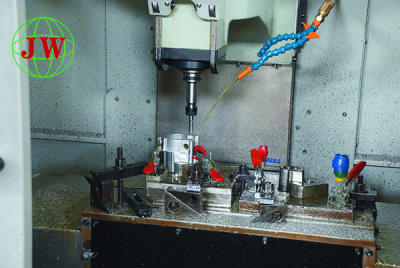
Do you understand the advanced Die Casting Mold design philosophy?
2024-10-12 15:38
In the field of manufacturing, Die Casting Mold plays a crucial role in determining the quality and efficiency of die casting production. The design of Die Casting Mold is a complex and technical process that requires a deep understanding of various factors. In this article, we will explore the advanced Die Casting Mold design philosophy and its importance in the die casting industry.
Die Casting Mold is a tool used to shape molten metal into specific forms. It consists of several components, including the cavity, core, ejection system, cooling system, and runner system. The design of Die Casting Mold must take into account many factors, such as the shape and size of the part to be produced, the properties of the metal being cast, the production volume, and the required surface finish.
The advanced Die Casting Mold design philosophy emphasizes the integration of functionality, reliability, and efficiency. This means that the mold must be designed to perform multiple functions simultaneously, while also ensuring high reliability and production efficiency. For example, the mold should be designed to cool the molten metal quickly and evenly to prevent defects such as porosity and shrinkage. At the same time, the ejection system should be designed to remove the part from the mold easily and without damage.
One of the key aspects of advanced Die Casting Mold design is the optimization of the cavity and core design. The cavity and core are the parts of the mold that directly shape the molten metal. Therefore, their design must be accurate and precise to ensure the dimensional accuracy and surface finish of the part. The cavity and core should also be designed to allow for easy removal of the part after casting, without causing damage to the mold or the part.
Another important aspect of advanced Die Casting Mold design is the selection of materials. The materials used for Die Casting Mold must be able to withstand the high temperatures and pressures of the die casting process, while also providing good wear resistance and corrosion resistance. Common materials used for Die Casting Mold include tool steels, hot work steels, and high-strength alloys.
The cooling system is also an essential part of advanced Die Casting Mold design. The cooling system is responsible for removing heat from the mold and the molten metal, which helps to prevent defects and improve production efficiency. The cooling system should be designed to provide even cooling throughout the mold, without causing thermal stress or distortion.
The runner system is another important component of Die Casting Mold. The runner system is responsible for delivering the molten metal to the cavity of the mold. The design of the runner system must ensure that the molten metal flows smoothly and evenly into the cavity, without causing turbulence or air entrapment.
In addition to these technical aspects, advanced Die Casting Mold design philosophy also emphasizes the importance of collaboration and innovation. Mold designers must work closely with product designers, process engineers, and production personnel to ensure that the mold meets the requirements of the product and the production process. At the same time, mold designers must be open to new ideas and technologies, and constantly seek ways to improve the design and performance of Die Casting Mold.
In conclusion, understanding the advanced Die Casting Mold design philosophy is essential for anyone involved in the die casting industry. Advanced Die Casting Mold design requires a deep understanding of the die casting process, materials science, and engineering principles. By following the advanced Die Casting Mold design philosophy, mold designers can create molds that are highly functional, reliable, and efficient, and help to improve the quality and productivity of die casting production.
Related News
More >-
![Global Die Casting Industry 2025: Integrated Technology Drives Growth, Sustainability Takes Center Stage]()
Global Die Casting Industry 2025: Integrated Technology Drives Growth, Sustainability Takes Center Stage
The 2025 global die casting industry, valued at $138.7B (8.2% CAGR 2020-2025), is driven by Integrated Die Casting and Sustainable Manufacturing. NEVs (45% of demand), aerospace, and consumer electronics fuel growth. Key innovations include high-tonnage machines, Advanced Lightweight Alloys, AI optimization, and digital twins. Industry prioritizes energy efficiency and scrap recycling, yet faces raw material price volatility, supply chain issues, and skilled labor shortages, with smart manufacturing shaping its future.
-
![Low-Carbon Tech & AI: The Dual Engines Powering Aluminum Die-Casting Mold Industry Growth]()
Low-Carbon Tech & AI: The Dual Engines Powering Aluminum Die-Casting Mold Industry Growth
Frankfurt, Nov. 3, 2025 – The global aluminum die-casting mold market, set to hit $120B by 2030, is driven by low-carbon tech and AI. Stricter rules (EU New Green Deal, China’s “Dual Carbon”) push recycled alloy molds (38% of production now, up from 19% in 2020), cutting CO₂ by 42%. AI-optimized molds with IoT sensors reduce downtime by 28% and defects to 0.3%, while digital twins slash development time by 40%. EV demand boosts mega-casting molds (2m+ parts), cutting vehicle weight by 15-20%. Challenges like SME tech access and 25% technician shortage exist, but training programs aim to address gaps, with the sector poised for innovation-led growth.
-
![Asia-Pacific Leads Global Die-Casting Expansion: New Markets, Cross-Industry Use Cases, and Policy Support Drive Growth]()
Asia-Pacific Leads Global Die-Casting Expansion: New Markets, Cross-Industry Use Cases, and Policy Support Drive Growth
The die-casting industry sees APAC as its core growth driver, holding 70% of global production. Valued at 55Bin2024,APAC’smarketissettohit 82B by 2030 (7.2% CAGR). China dominates (58% of APAC output) via EV demand for large-format die-casting molds, while SE Asia (Vietnam, Thailand) and India gain traction with investments and policies like “Make in India.” Beyond automotive, die-cast components serve power electronics (e.g., Huawei’s 5G heat sinks) and renewables (Adani’s solar enclosures). APAC policies (China’s “Dual Carbon,” India’s green hydrogen mission) push sustainability. Challenges like H13 steel shortages exist, but “local for local” manufacturing and low-carbon alloys offer opportunities
-
![Die-Casting Industry’s Dual Breakthroughs: Surging Demand for Die-Cast Components Drives Die-Casting Mold Innovation]()
Die-Casting Industry’s Dual Breakthroughs: Surging Demand for Die-Cast Components Drives Die-Casting Mold Innovation
In 2025, the global die-casting industry enjoys dual dividends of "demand explosion" and "technological iteration." New energy vehicles (NEVs) and other sectors drive the die-cast components market to exceed $320 billion, while die-casting molds upgrade via AI and new materials. NEVs use over 50kg of die-cast components per vehicle; Tesla’s Model Y integrated die-castings boost efficiency, and LK Group launches 9,000-ton die-casting machines with supporting molds. Mold tech breaks through in materials (ceramic-coated steel, composite molds) and intelligence (AI design systems). Green manufacturing also gains traction. By 2030, the integrated die-cast components market is expected to surpass $80 billion, with the "intelligence + green" path fueling industry growth.
-
![Aluminum Furniture Connectors: How Die-Casting Molds & Alloy Components Elevate Modern Home Design]()
Aluminum Furniture Connectors: How Die-Casting Molds & Alloy Components Elevate Modern Home Design
Aluminum furniture connectors revolutionize furniture manufacturing, solving instability/rust issues. Powered by aluminum alloy die-castings (ADC12/A380, 60% lighter than steel, 5x more impact-resistant than plastic) and precise die-casting molds (H13 steel, ±0.03mm tolerance), they enable durable modular furniture. 3D-printed mold inserts cut production time by 25%, while 70% of brands use recycled aluminum in connectors for sustainability. The $1.2B 2023 market will hit $1.8B by 2030 (Asia-Pacific leading). Future trends include sensor-equipped connectors and AI-powered molds, with nanocoatings boosting durability.
-
![Aluminum Die-Castings: Powering Innovation Across Industries with Precision and Versatility]()
Aluminum Die-Castings: Powering Innovation Across Industries with Precision and Versatility
Aluminum die-castings are pivotal in modern manufacturing, spanning automotive, aerospace, construction, and electronics. Produced via high-pressure injection of molten aluminum alloys (e.g., ADC12, A380) into steel molds, they offer tight tolerances (±0.02mm), strength, lightness, and corrosion resistance. Their design flexibility integrates multiple features, cutting costs. Used in EV parts, aircraft components, and electronics, they drive efficiency. The $78B 2023 market grows 7.5% yearly, fueled by EVs and renewables. With 3D printing and AI advancing production, plus high recyclability, they’re key to sustainable innovation.
-
![Aluminum Alloy Automotive Die-Casting Parts: Driving the Future of Lightweight Mobility]()
Aluminum Alloy Automotive Die-Casting Parts: Driving the Future of Lightweight Mobility
Aluminum alloy automotive die-casting parts are pivotal in automotive innovation, balancing performance, efficiency, and sustainability. Replacing steel, they cut vehicle weight (a 10% reduction boosts fuel efficiency by 6–8%), critical for emissions goals. Made via high-pressure die-casting with alloys like A380, these parts offer complex geometries, 320 MPa strength (60% lighter than steel), and cost savings. Used in EV batteries, chassis, and powertrains, they aid brands like Tesla and BYD. The $58B 2023 market grows 8.5% yearly, driven by EVs. With 3D printing and AI advancing production, and 100% recyclability, they shape the future of lightweight, eco-friendly mobility.
-
![Aluminum Furniture Die Castings: How Molds and Components Shape Modern Design]()
Aluminum Furniture Die Castings: How Molds and Components Shape Modern Design
Aluminum die castings and die casting molds are transforming furniture manufacturing, merging precision, strength, and sustainability. Molds—crafted from hardened steel using CAD and 3D modeling—produce consistent, intricate castings with tight tolerances, enabling complex designs like curved chair legs or modular frames. Castings offer lightweight durability (200–300 MPa tensile strength), corrosion resistance, and recyclability, ideal for indoor/outdoor use. Innovations like 3D-printed mold inserts and smart sensors boost efficiency, while demand grows (5.8% annual market growth). Despite high initial mold costs, their longevity and low per-unit costs drive adoption, making them key to modern, eco-friendly furniture design.
Get the latest price? We'll respond as soon as possible(within 12 hours)












